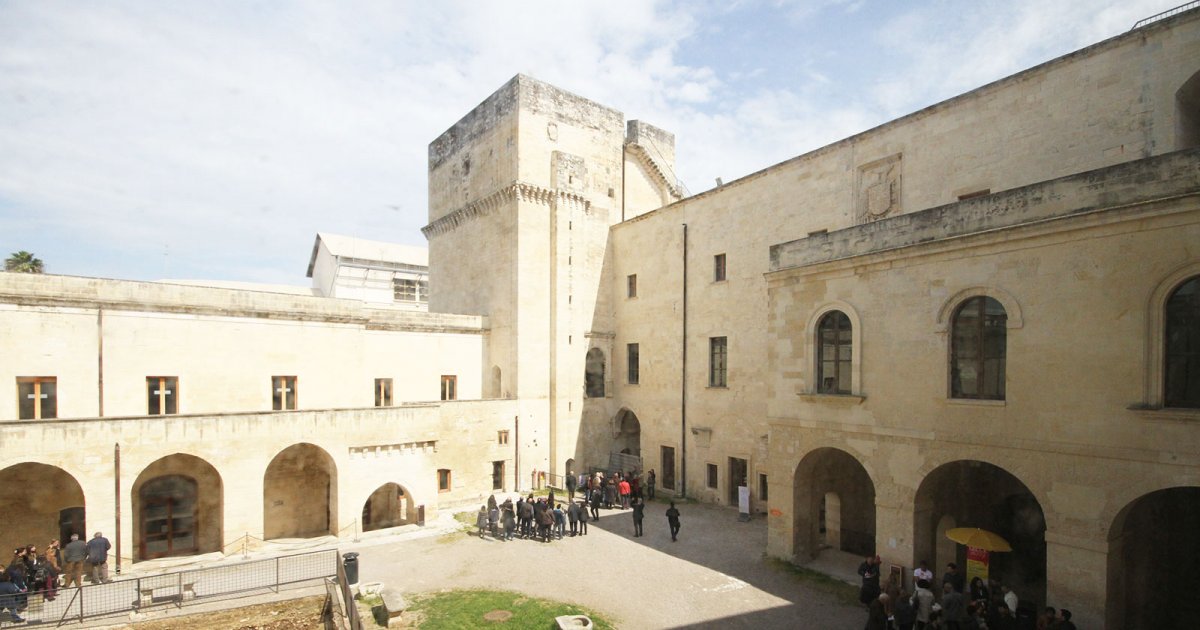CASTLE OF CHARLES V, Castle Of Charles V
 Language: English / USA
Language: English / USA
Hi, my name’s Scott, and I’m your personal guide. Along with MyWoWo, I’d like to welcome you to one of the Wonders of the World: the Castle of Charles V, the formidable fortress in Lecce that is one of the largest in Apulia.
Construction of the Castle began in 1537, on the orders of the emperor, Charles V, by the expert military engineer from Naples, Gian Giacomo dell'Acaya, along with the magnificent city walls, part of which are now gone. Designed in accordance with the most modern military techniques of the time, the fortress incorporated an earlier castle, from the 13th century, of which the powerful square keep, or main tower, is still visible.
The castle was surrounded by a moat, which was filled in the 19th century; entrance was through two gates with drawbridges. There are embrasures on the walls for the artillery, reinforced with four forbidding arrow-head bastions at the corners.
Charles V stopped at nothing when it came to building his castles: this was the site of the Convent of the Celestine Order and the Church of Santa Croce, which were completely demolished and rebuilt within the city walls, where they can still be seen today.
This massive, extremely costly work, lasting 24 years, was necessary to defend the city from attacks by the Turks.
In a bitter twist of fate, the great engineer, Gian Giacomo dell'Acaya, who had built the most important fortification in Apulia, returned here as a prisoner in 1570, after being arrested for standing as guarantor for an insolvent debtor. He was stripped of all his possessions and thrown into the dark, gloomy cells he had built just decades earlier, and died here that very year.
The castle did not only have a defensive function, and in the 18th century one of its halls was used as a theater. Visitors today will be awestruck by the delicate adornments of the interiors, especially the capitals of the columns, and the large frescoed hall, embellished with striking stained-glass windows.
A fascinating Museum of Papier Mâché, a typical element in Lecce craftsmanship, has recently been opened in the Castle, and is well worth a visit.
Let me leave you with an interesting fact: legend has it that in the early 15th century, the Orsini Del Balzo counts of Lecce used to keep a white bear in the moat, probably more to show off as a curiosity than to frighten off potential aggressors.



